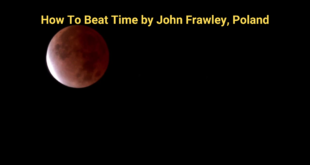Related Articles
Horā-Ratnam” is a great astrological classic, meaning “Gem of Horā shāstra (the science of prediction about human lives) written by Balabhadra Mishra. Balabhadra himself tells that “Horā-Ratnam” was completed on Chaitra Shukla Chaturthi in the Shaka 1710 (around 1788 A.D.). Balabhadra was of Bhāradwāj gotra and born in Kānyakubja clan. His other works include Hāyanratna and commentaries on “Horā Makarand” and “Bija Ganitam”.
There exist Hindi translations of both parts of “Horā-Ratnam” by Dr. Muralidhar Chaturvedi, a great Sanskrit scholar of the modern era. Siddhivināyaka Press of Varanasi has also published a Sanskrit edition of Horā Ratnam around 1878. Chowkhamba Sanskrit Publication has also published Horā Ratnam. The first part of “Horā-Ratnam”, comprising of 5 chapters has already been translated by R. Santānam a revered astrologer of modern era, in 1995. Unfortunately, the translation of the second part of this great classic, consisting of the rest of the 5 chapters, could not be completed by him in his lifetime.
Saptarishis Astrology who publishes many valuable and rare manuscripts, on Vedic Astrology, on their website for the benefit of astrologers had obtained the manuscript of “Horā-Ratnam” and requested me to translate in English, the second part of this classic for the benefit of modern astrologer. I do not claim to be a great scholar of Sanskrit language but have tried my best to convey the correct meaning of what is being said by the learned Balabhadra. In places where I differ from the other translators, I have added my comments giving both the other translator’s opinion and mine and have left it for the learned to accept which they think is right. The 6th Chapter which is now being serialized at instance of Sunil John my young friend & contains Nabhasa and other yogas, yoga’s told by Yavanacharya, and other various named yoga’s as given by the venerated Balabhadra.
Chandrashekhar Sharma
होरारत्नम्
श्रीमन्मिश्रबलभद्रविरचितम्
द्वितीयकाण्डः
टीकाकारः
षष्टोध्यायः
Chapter VI
॥अथ नाभसयोगानाह ॥
|ath nābhasayogānāha||
Now narration of Nābhasa yoga begins.
यवनाद्यैर्विस्तरतः कथिता योगास्तु नाभसानाम्ना
अष्टादशशतगुणीतास्तेषां द्वात्रिंशदिह वक्ष्ये॥१॥
yavanādyairvistarataḥ kathitā yogāstu nābhasānāmnā aṣṭādaśaśataguṇītāsteṣāṁ dvātriṁśadiha vakṣye||1||
Listen to 32 out of the 1800 yogas collectively called as Nābhasa yoga and described in detail by the Achārya Yavana and others, in the past.
॥आश्रययोगानाह सत्याचार्यः॥
|’aśrayayogānāha satyācāryaḥ||
Ashraya yogas, as told by Satyāchārya.
चरराशिगिरशेषै रज्जुः स्थिरगतस्तथा मुशलम्।
द्विशरीरगतैर्योगो नलसंज्ञो मुनिभिरुद्दिष्टाः॥२॥
cararāśigiraśeṣai rajjuḥ sthiragatastathā muśalam|
dviśarīragatairyogo nala saṁjño munibhirudiṣṭāḥ||2||
It is mentioned by the learned that when all the grahas (planets) occupy Chara (cardinal) rāshis the yoga is called Rajju yoga, when they are in Sthira rāshi (fixed) the yoga caused is “Mushala” (also called Musala) yoga and if the grahas occupy Dwisvabhāva (dual) rāshis, it is called Nala yoga.
एतद्योगत्रितयं चाश्रयसंज्ञं च विज्ञेयम्।
etadyogatritayaṁ cāśrayasaṁjñaṁ ca vijñeyam|
Know that these three yogas are called the “Āshraya” (shelter- of certain group of rāshis/bhāvas) yogas.
अत्र चरादिराशिचतुष्के सर्वग्रहाऽवस्थित्या योगाः भवन्तीति कैश्चिदुक्तं तदसत्। यतो गर्गेण स्पष्टमुक्तम्
एको द्वौ वा त्रयः सर्वे सर्वैर्युक्ता यदा ग्रहैः।
atra carādirāśicatuṣke sarvagrahā’vastityā yogāḥ bhavantīti kaiścidktaṁ tadasat| yato gargeṇa spaṣṭamuktam eko dvau vā trayaḥ sarve sarvairyuktā yadā grahaiḥ|
Some authorities say that all the grahas must occupy all the 4 Chara, Sthira or Dwisvabhāva rāshis, these yogas are caused. However as clearly told by Sage Garga, if all the grahas occupy one, two, three or all the Chara, Sthira or Dwisvabhāva rāshis, the āshraya yogas are said to have occurred.
चरयोगस्तदा रज्जुर्दुःखिजन्मप्रदो भवेत्॥३॥
स्थिराश्चेन्मुसलं नाम ज्ञानिनां कृतकर्मणाम्।
द्विस्वभावा नलाख्यास्तु धनिनां परिकीर्तितः॥४॥
carayogastadā rajjurduḥkhijanmaprado bhavet||3||
sthirāścenmusalaṁ nāma jñānināṁ kṛtakarmaṇām|
dvisvabhāvā nalākhyāstu dhanināṁ parikīrtitaḥ||4||
A jātaka born in Rajju yoga experiences sorrow (throughout his life), the one who is born in “Musala” (Mushala) yoga is knowledgeable and performer of religious activities and the one who is born in Nala yoga is known to be wealthy.
॥आश्रययोगेषु विशेषमाह वराहः॥
|’aśrayayogeṣu viśeṣamāha varāhaḥ||
Special comments by Varāha Mihira, (A famous astrologer predating Balabhadra) on Āshraya yogas.
आश्रयोक्तास्तु विफला भवन्त्यन्यैर्विमिश्रिताः।
मिश्रास्तु तत्फलं दद्युरमिश्रा ह्यफलप्रदाः॥५॥
āśrayoktāstu viphalā bhavantyanyairvimiśritāḥ|
miśrāstu tatphalaṁ dadyuramiśrā hyaphalapradāḥ||5||
When the “Āshraya” yoga occurs simultaneously with other yogas then results of āshraya yoga do not fructify, becoming a mixed yoga. Similarly, if the Āshraya yoga is mixed with other yogas, the results of that yoga are only realized (and not of the Āshraya yogas).
॥अन्यैर्न्येच वज्रार्दल योगद्वयंमाह पराशरः॥
|’nyairnyeca vajrārdala yogadvayaṁmāha parāśaraḥ||
Now are told the “Vajra” etc. yogas, told by others, and the two “Dala” yogas told by Pārāshara.
केन्द्रत्रयगतैः पापैः सौम्यैर्वादलसंज्ञितैः।
द्वौ योगौ सर्पमालाख्यावनिष्टेष्टफलप्रदौ॥६॥
kendratrayagataiḥ pāpaiḥ saumyairvādalasaṁjñitaiḥ|
dvau yogau sarpamālākhyāvaniṣṭeṣṭaphalapradau||6||
When malefics or benefics (alone) occupy three Kendras (squares), the yogas thus caused are called “Dala” yogas. These two yogas are called “Sarpa” and “Mālā” (string, generally of flowers) yogas and give ill and good results, respectively.
अत्र दलयोगेषु चन्द्रः क्रूरेषु सौम्येषु च न ग्राह्यः।
यदाह गर्गः॥
Sage Garga has said that Chandra (moon) is not to be considered as a malefic or a benefic in the Dala yogas.
त्रिकेन्द्रगैर्यमारार्कैः सर्पो दुःखी तदुद्भवः।
भोगिजन्मप्रदा माला तद्वज्जीवसितेन्दुजैः॥७॥
atra dalayogeṣu candraḥ krūreṣu saumyeṣu ca na grāhyaḥ|
yadāha gargaḥ||
trikendragairyamārārkaiḥ sarpo duḥkhī tadudbhavaḥ|
bhogijanmapradā mālā tadvajjīvasitendujaiḥ||7||
Chandra (Moon) is not to be considered as malefic or benefic for the purpose of these “Dala” yogas. As told by Sage Garga, when the three kendras are occupied by Shani (Saturn), Mangal (Mars) and Surya (Sun) Sarpa yoga occurs and one gets sorrows on that account. One enjoys pleasures of life if Guru (Jupiter), Shukra (Venus) and Budha (Mercury) are placed in three kendras resulting in “Mālā” yoga.
अत्र मिश्रग्रहैः केन्द्रस्थैर्योगो भवतीत्याह बादरायणः
केन्द्रेषु पापेषु सितज्ञजीवैः केन्द्रत्र्ययस्थैः कथयन्ति मालाम्।
सर्पर्स्तु सौम्येषु यमारसुर्यैर्योगाविभौ द्वौ कथितौ दलाख्यौविति॥८॥
atra miśragrahaḥ kendrasthairyogo bhavatītyāha bādarāyaṇaḥ
kendreṣu pāpeṣu sitajñajīvaiḥ kendratryayasthaiḥ kathayanti mālām|
sarparstu saumyeṣu yamārasuryairyogāvibhau dvau kathitau dalākhyauviti||8||
Sage Bādarāyana says that the “Dala” yogas occur if mixed grahas occupy the Kendras (three). When malefics occupy three Kendras with Venus, Mercury and Jupiter (Shukra, Budha and Guru) “Mālā” yoga occurs, while when benefics occupy such Kendras along with Saturn, Mars and Sun (Shani, Mangal and Surya), “Sarpa yoga” occurs and these two yogas are called “Dala” yogas.
Author’s Comment: This observation of Sage Bādarāyana is most confusing. If all the three kendras are to be occupied by malefics and benefics as described, there does not seem to be any difference between the yogas and the, use of Bahuvachan (Plural) {Sanskrit language has singular, dual, and plural numbers [words indicating more than two persons/ articles etc], unlike other languages that usually have singular and plural numbers only}, indicates more than two malefics or benefics in Kendra along with the named grahas. The only way this could give a different set of yogas is if one considers Rāhu, Ketu and weak Chandra to be included in the yoga as malefics, when Mālā yoga as indicated by Bādarāyana could occur.
॥अथाकृतियोगाः ज्ञानमुक्तावल्याम्॥
|’thākṛti yogāḥ jñānmuktāvalyām||
Now are being told “Ākriti” (figure) yogas as told in the classic “GYānamuktāvali”
लग्नाम्बुगैर्म्बुनगस्थितैर्वा सप्ताम्बरैरम्बरलग्नसंस्थैः।
एवं चतुर्धा कथितो गदाख्याः शुभाशुभैः खेचरकैस्तु सर्वैः॥९॥
lagnāmbugairmbunagasthitairvā saptāmbarailagnasaṁsthaiḥ|
evaṁ caturdā kathit gadākhyāḥ subhāsubhaiḥ khecarakaistu sarvaiḥ||9||
Four types of “Gadā” yogas have been said to occur when, in a chart, all the benefic and malefic planets occupy 1) Lagna and 4th bhāva, 2) 4th and 10th bhāva, 3) 7th and 10th bhāva or 4) 10th and Lagna bhāva.
लग्नास्तास्तु शकटं विहङ्गः सुखकर्मगैः।
लग्नपञ्चमनन्दस्थैः खगैः शृङ्गाटकं स्मृतम्॥१०॥
lagnāstāstu śakaṭaṁ vihaṅgaḥ sukhakarmagaiḥ|
lagnapañcamanandasthaiḥ khagaiḥ śrṛṅgāṭakaṁ smṛtam||10||
When all planets occupy the lagna and the 7th bhāva the yoga, so caused, is called “Shakata” yoga while when all the grahas occupy the 4th and the 10th bhāva the yoga is called “Vihanga” yoga. When all the grahas occupy the Lagna, the 5th and the 9th bhāva the yoga caused is known as “Shringātaka” yoga.
द्वितियषष्ठकर्मस्थैस्त्रिसप्तायगतैः खगैः।
बन्धुनैधनरिष्फस्थैस्त्रिधा तु हल संज्ञकः॥११॥
dvitiyaṣaṣṭhakarmasthaistrisaptāyagataiḥ khagaiḥ|
bandhunaidhanariṣphasthaistridhā tu hala saṁjñakaḥ||11||
Three types of yogas called “Hala” yogas are caused by placement of all the grahas in 2nd, 6th and 10th bhāva, in the 3rd, 7th and 11th bhāva or in 4th, 8th and the 12th bhāva.
विलग्नास्ते शुभाः सर्वे खबन्धौ पापखेचराः।
वज्रं नाम विजानीयात्तद्व्यस्तैर्यवसंज्ञकः॥१२॥
vilagnāste śubhāḥ sarve khabandhau pāpakhecarāḥ|
vajraṁ nāma vijānīyāttadvyastairyavasaṁjñakaḥ||12||
“Vajra” yoga is caused when all benefics occupy the lagna, while all malefics occupy the 4th and the 10th bhāva. When the position is reversed, that is all malefics occupy the lagna while all the benefics occupy the 4th and the 10th bhāva a yoga called “Yava” is caused.
॥वज्रादियोगेषु दूषणमाह वराहः॥
||vyayādi yogeṣu dūṣaṇamāha varāhaḥ||
The flaws in “Vajra” and “Yava” yogas, as told by Varāha Mihira, are now told.
पूर्वशास्त्रानुसारेण मया वज्रादयः कृताः।
चतुर्थभवने सूर्याज्ज्ञसितौ भवतः कथं॥१३॥
pūrvaśāstrānusāreṇa mayā vajrādayaḥ kṛtāḥ|
caturthabhavane sūryāzjñasitau bhavataḥ kathaṁ||13||
(Varāha Mihira has said) I have told the “Vajra” etc. (meaning Vajra and Yava) yogas as they have been told in ancient texts, otherwise how can Surya and Budha be in 4th bhāva from each other?
अत्र वराहमिहिरेण सूर्याद्बुधशुक्रयोश्चतुर्थगत्वासंभवः स्वदेशाभिप्रायेणोक्तः। यतो द्वादशाङ्गुलादिकपलभादेशे रवेश्चतुर्थे बुधशुक्रयोः संभवो भवति। अत्र धूलिकर्मणार्थज्ञानमात्मनो दूरो करोत्यायुष्मान। उक्तञ्च चिन्तामणौ वराहमिहिराचार्यै सूर्यपुष्टाक्षमे युतः। तत्संभवोस्त्यतः स्वीयदेशाभिप्रायतः स्मृतमिति।
atra varāhamihireṇa sūryādbudhaśukrayoścaturthagatvāsaṁbhavaḥ svadeśābhiprāyeṇoktaḥ| yato dvādaśāṅgulādikapalabhādeśe raveścaturthe budhaśukrayoḥ saṁbhavo bhavati| atra dhūlikarmaṇārthajñānamātmano dūro karotyāyuṣmāna| uktañca cintāmaṇau varāhamihirācāryai sūryapuṣṭākṣame yutaḥ| tatsaṁbhavostyataḥ svīyadeśābhiprāyataḥ smṛtamiti|
Varāha Mihira has talked about the placement of Mercury and Venus (Budha and Shukra) in 4th bhāva from Sun (Surya) being impossibility, taking into consideration the relative astronomical position of these grahas in his own country (India). Where the Palabhā is more than 12 fingers, Mercury and Venus (Budha and Shukra) can occupy the 4th rāshi/bhāva from Surya.
Author’s Comment: The learned “Balabhadra”, as befits all great writers, first gives the opinion of Varāha Mihira on the Vajra and Yava yoga that it is impossible to occur on account of Mercury and Venus (Budha and Shukra) never being more than 3 rāshis/bhāvas away from Sun (Surya). Then he goes on to give his opinion to the contrary and politely opines that apparently Varāha Mihira must have said this on the basis of the astronomical position in his country of residence that is Ujjain City in Central India. He further states that at places where the Palabhā is more than 12 fingers, Budha and Shukra can be more than 3 rāshis away from Surya. This means that in the more northern regions it is possible that Budha and Shukra can be more than three rāshis away from Surya, at certain times of the year.
In order to understand what the learned Balabhadra is referring to when he talks about Palabhā, let us see what is Palabhā and how is it measured. Shanku is a cylindrical stick, of 12 finger length and 2 finger circumference, placed in ground to measure various parameters in astronomy on the basis of the length of shadow cast when Sun’s light falls on the Shanku during various time of a day and year. The shadow cast by the Shanku during Vishuvat Sankrānti that is Mesha Sāyana Sankrānti (ingress of Surya in Aries rāshi, calculated without deduction of Ayanāmsha that is using tropical zodiac) occurring on 21st March, at noon, it is called Palabhā. This can also be measured at Sāyana “Tulā” Sankrānti (ingress of Surya to “Libra” using tropical zodiac) falling on 23rd of September.
॥ज्ञानमुक्तावल्याम्॥
||jñānamuktāvalyām||
Now as told in the classic “GYānamuktāvali”
मिश्राः पापाः शुभाः सर्वे चतुःकेन्द्रेऽथ पद्मकम्।
तैरेवापोक्लिमस्तैर्वा पणफरेऽपि च वापिका॥१४
miśrāḥ pāpāḥ śubhāḥ sarve catuḥkendre’tha padmakam|
tairevāpoklimastairvā paṇaphare’pi ca vāpikā||14
When all the malefics and benefic are mixed and occupy all the four Kendras, “Padma” yoga is caused while when they occupy all four āpoklima or panaphara bhāvas, “Vāpi” yoga occurs.
Author’s Comment: “Padma” yoga is called “Kamal” yoga, in “Brihat Pārāshara Horā Shāstra” and “Sārāvali”, perhaps because “Padma” does mean Kamal (Lotus).
एकद्वित्रिचतुर्थस्थैः सर्वखेटैस्तु यूपकम्।
तूर्यादिसप्तमान्तस्थैरेवं बाणः प्रजायते॥१५॥
ekadvitricaturthasthaiḥ sarvakheṭaistu yūpakam|
tūryādisaptamāntasthairevaṁ bāṇaḥ prajāyate||15||
If all the grahas occupy the 1st, 2nd, 3rd and 4th bhāva “Yupa” yoga occurs. When the grahas occupy the four bhāvas from 4th to the 7th, “Bāna” yoga occurs.
Author’s Comment: “Bāna” yoga is called “Shara” yoga, in “Brihat Pārāshara Horā Shāstra” and Sārāvali. Bāna” and “Shara” are synonymous.
सप्ताष्टनन्दकर्मस्थैः खगैः शक्तिरिति स्मृतः।
दशादि लग्नपर्यन्तैः सर्वैर्दण्डाभिधानकः॥१६॥
saptāṣṭanandakarmasthaiḥ khagaiḥ śaktiriti smṛtaḥ|
daśādi lagnaparyantaiḥ sarvairdaṇḍābhidhānakaḥ||16||
When all the grahas occupy all the four bhāvas from 7th to the 10th “Shakti” yoga arises and when all the grahas occupy all the four bhāvas from the 10th to the lagna bhāva, a yoga called “Danda” yoga takes place.
लग्नादिसप्तमान्तस्थैः सर्वखेटेस्तु नौरिति।
तुर्यादिदशमान्तस्थैः कूट इत्यभिदीयते॥१७॥
lagnādisaptamāntasthaiḥ sarvakheṭestu nauriti|
turyādidaśamāntasthaiḥ kūṭa ityabhidīyate||17||
When all the grahas occupy all the seven bhāvas from Lagna bhāva to the 7th bhāva “Naukā” yoga takes place and when all the grahas occupy the 7 bhāvas from the 4th to the 10th bhāva, “Kuta” yoga is said to have taken place.
सप्तादिविलग्नान्तैः छत्रः सकल खेचरैः।
एवं दशादितुर्यान्तैश्चाप इत्युच्यते बुधैः॥१८।
saptādivilagnāntaiḥ chatraḥ sakala khecaraiḥ|
evaṁ daśādituryāntaiścāpa ityucyate budhaiḥ||18|
The learned say that Chatra yoga occurs when all the grahas occupy all the 7 bhāvas from the 7th bhāva to the lagna bhāva and when all the grahas occupy all the 7 bhāvas from 10th bhāva to the 4th bhāva Chāpa yoga (also called Kārmuka yoga) occurs.
परस्परद्वयादष्टौ तृतीयान्नवमान्तकम्।
पञ्चमैकादशः षष्ठाद्द्वादशं त्वष्टधा शशी॥१९।
parasparadvayādaṣṭau tṛtīyānnavamāntakam|
pañcamaikādaśaḥ ṣaṣṭhāddvādaśaṁ tvaṣṭadhā śaśī||19
When all the grahas occupy all the 7 bhāvas 1) from 2nd bhāva to the 8th bhāva, 2) from 3rd bhāva to the 9th bhāva 3) from the 5th bhāva to the 11th bhāva 4) from the 6th to the 12th bhāva 5) from the 8th to the 2nd bhāva 6) from the 9th to the 3rd bhāva 7) from the 11th to the 5th bhāva and 8) from the 12th to the 6th bhāva; eight types of Shashi (or Chandra) yogas take place.
Author’s Comment: In Brihat Pārāshara Horā Shāstra and Sārāvali this yoga is called “Ardha-Chandra”, that is half moon, yoga.
लग्नत्रिपञ्चसप्तर्क्षनवमेकादशे स्थितैः।
सर्वैश्चक्रं द्वितीयादावेवं योगः समुद्रकः॥२०॥
lagnatripañcasaptarkṣanavamekādaśe sthitaiḥ|
sarvaiścakraṁ dvitīyādādevaṁ yogaḥ samudrakaḥ|20|
When all the grahas occupy the lagna, 3rd, 5th 7th 9th and 11th bhāvas “Chakra” yoga occurs while when the 2nd, 4th, 6th, 8th, 10th and 12th bhāva are occupied by all the grahas “Samudra” yoga is caused.
॥इत्याकृतियोगाः॥।
||ityākṛti yogāḥ||
Thus end the Aakriti yogas.
Learn Astrology: Join Our Upcoming Astrology Classes — Click Here
Learn Astrology: Join Our Recorded Astrology Classes — Click Here
 Saptarishis Astrology Magazine Into Creating Astrologers
Saptarishis Astrology Magazine Into Creating Astrologers






